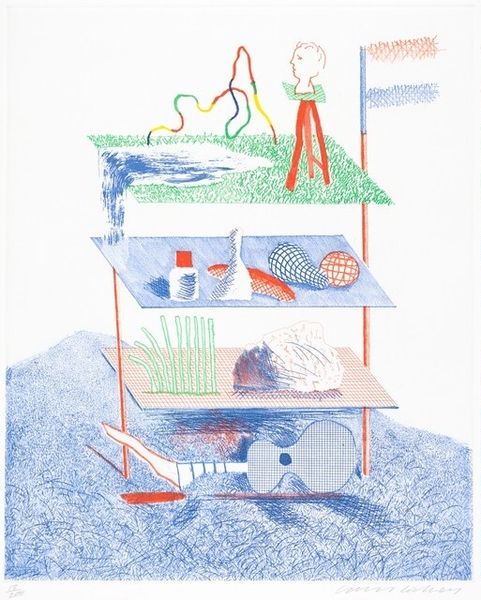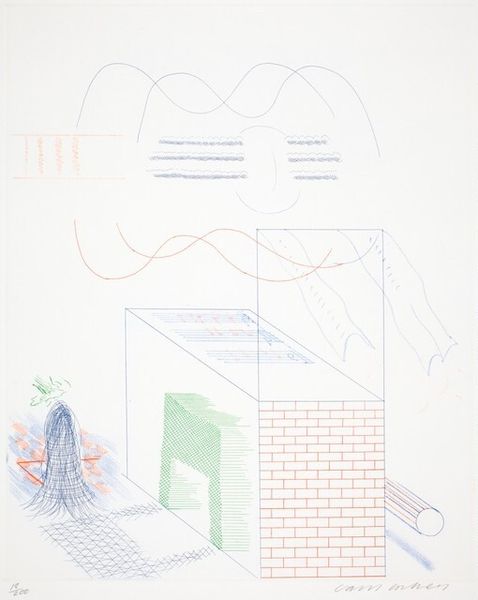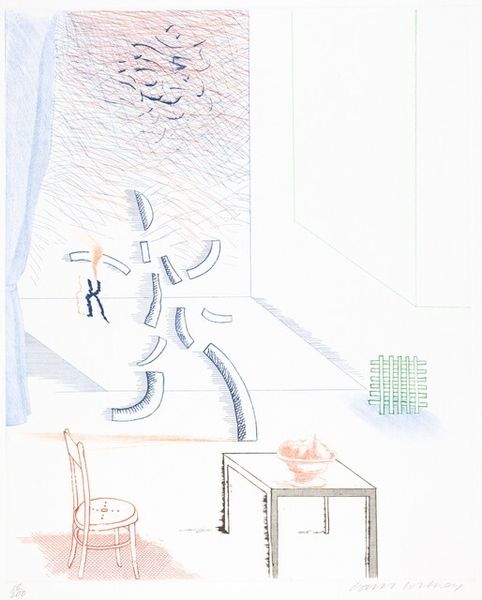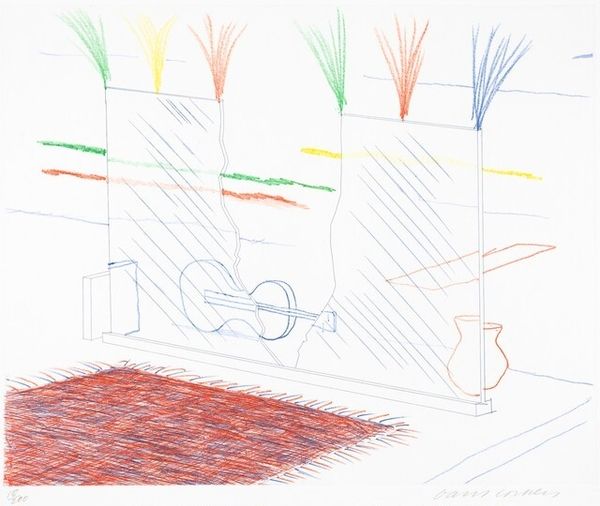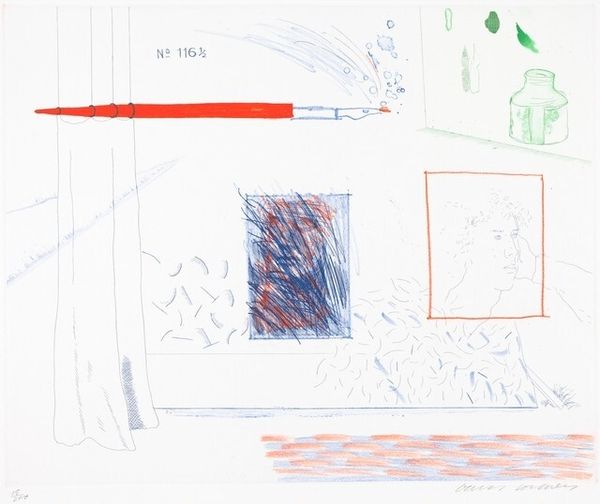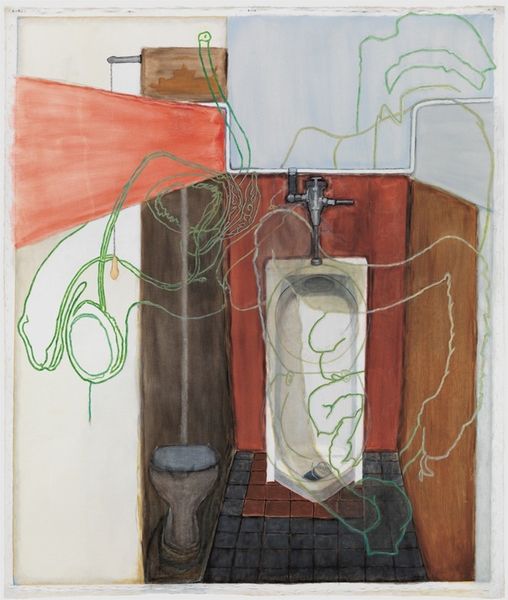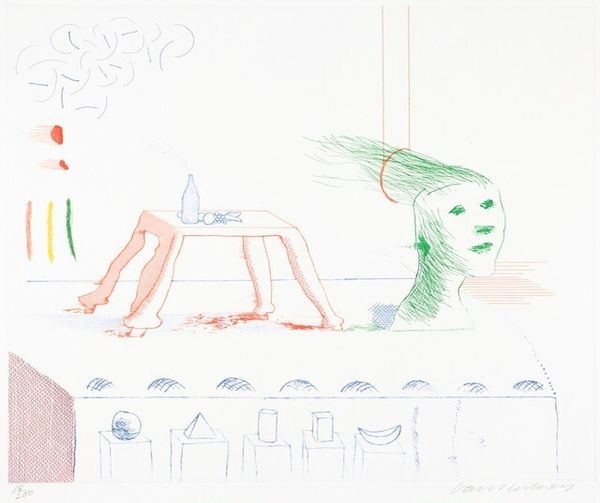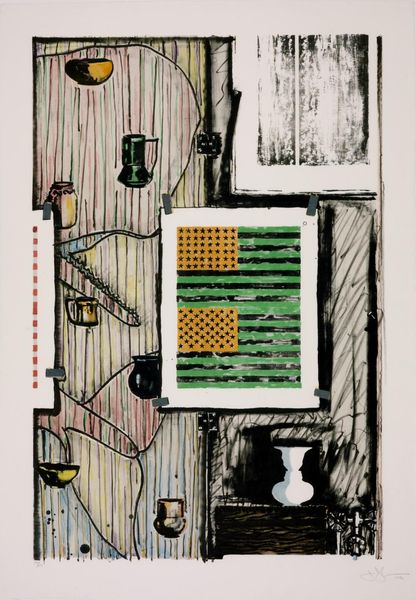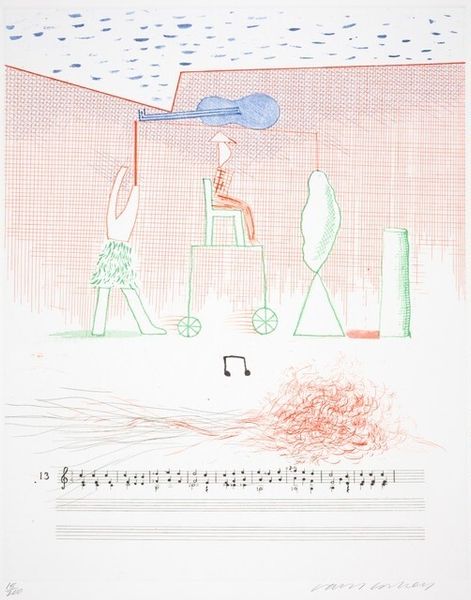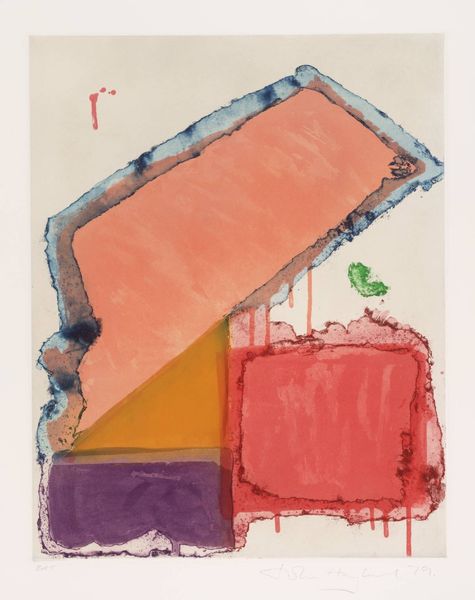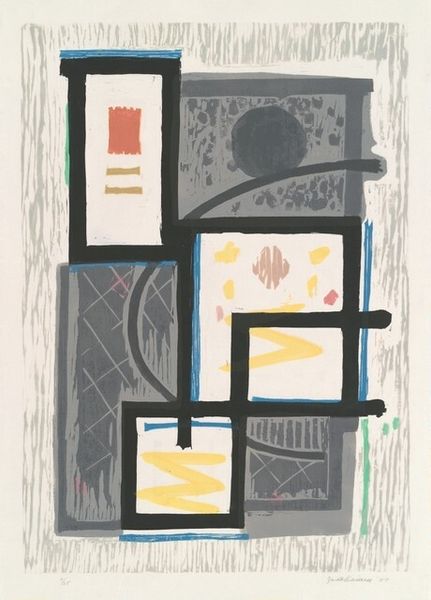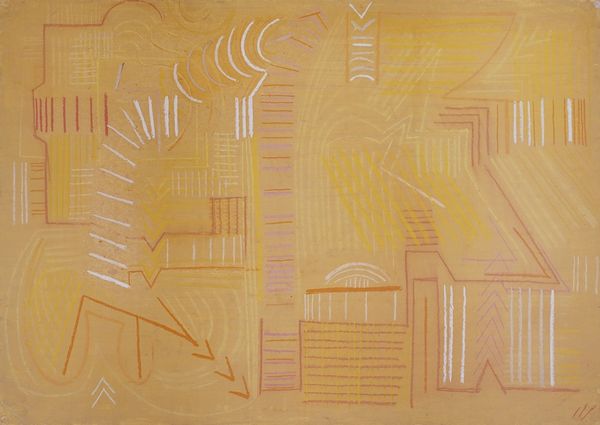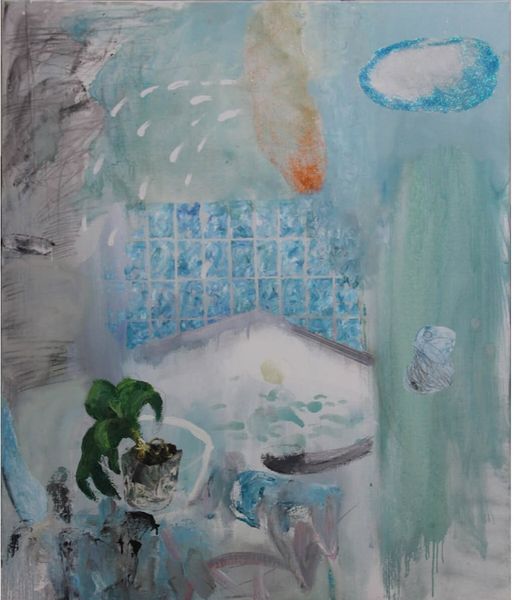
print, etching
#
cubism
# print
#
etching
#
etching
#
geometric
#
modernism
Dimensions: plate: 34.5 x 42.5 cm (13 9/16 x 16 3/4 in.) sheet: 45.5 x 52 cm (17 15/16 x 20 1/2 in.)
Copyright: National Gallery of Art: CC0 1.0
Curator: This intriguing print is entitled “In a Chiaroscuro,” dating from 1976-77 by David Hockney. Editor: Immediately, what grabs me are these peculiar objects strewn across the top surface – almost like props on a miniature stage. It has a whimsical quality, wouldn’t you say? Curator: Whimsical indeed. Hockney was really playing with perspective here, blurring the lines between realism and something far more imagined. He's using etching techniques to create that crisp yet dreamlike quality. Editor: Let’s talk process then, it's vital. Hockney's choice of etching brings such attention to labor and reproducibility. Think about the acid baths, the careful inking. The materiality, almost handmade but made for repetition – there's inherent tension. How do you interpret Hockney positioning 'art' within craft like this? Curator: He did like to stir things up, didn't he? Think about Hockney's explorations with photography. He loved messing with representation, and, to your point, how "authenticity" gets coded through material choices and methods of reproduction. This whole setup, for me, echoes the feeling of peeking behind the scenes of a theatre, doesn't it? Editor: That comparison's spot on. Hockney frames art objects like consumer goods, like interchangeable roles played by similar materials: this tent, guitar and woven forms might mirror each other, not as symbolic doubles, but as interchangeable outputs of artistic and economic processes. Curator: Precisely! But that muted palette almost creates an inner sense of peace within what we have identified is a busy configuration of visual activity. He leads the eye calmly, no? I enjoy getting to muse upon how we see, and this is what this evokes in me; how David played with such a notion! Editor: So while Hockney gestures toward critical engagement with production and materials, ultimately the artwork functions as decoration within structures that already normalize commodity relationships. Is he implicating his buyers then too in a process of circulation? Curator: Perhaps he's merely reflecting the very consumer-driven culture around him back at us! I sense irony there... Hockney the trickster? Editor: Or, even worse, is he normalizing it through beautification. Either way, something's getting sold here, whether that's an idea, an affect, or, indeed, an etching! Curator: Indeed. Food for thought as we move on. Thanks for untangling all those visual threads.
Comments
No comments
Be the first to comment and join the conversation on the ultimate creative platform.
